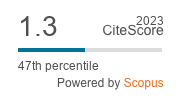CEFTA as a Proven Path to Accession to the European Union
DOI:
https://doi.org/10.2478/cer-2013-0012Abstract
At the beginning of the 1990s Poland, like the majority of the Central and East European countries (CEECs) undergoing transformations, overcame its initial distrust and began to recognize that the only path to regional stability and national economic growth was economic integration. The Central and Eastern European Free Trade Agreement (CEFTA), signed by the Czech Republic, Hungary, Poland, and Slovakia on 21 December 1992 in Cracow, provided for the elimination of a number of trade barriers and the growth in commercial exchanges between the signatory nations, aimed at facilitating their integration with the European Union at a later stage. This article constitutes an attempt to assess the main effects of the implementation of CEFTA on the functioning of its member states as well as their further integration as Member States of the EU. It also presents the main provisions of the modernized CEFTA 2006, and the current problems related to implementation of the agreement. It also discusses the opportunities and prospects for Croatia, as a former CEFTA member state, upon its scheduled accession to the EU in July 2013. This article is intended as an introduction to further and deeper analysis in this area.
Downloads
References
Bożyk P. (1996), CEFTA and Economic integration in Europe. SGH Warszawa
Google Scholar
Chmilewska – Gill W. (2004), Liberalization of trade in the agriculture-foodstuff sector within the CEFTA framework: 1993-2003. Warszawa
Google Scholar
Kawecka – Wyrzykowska E. (2007) Współpraca regionalna i integracja z Unią Europejską państw Europy Środkowo – Wschodniej. Warszawa
Google Scholar
Molendowski E. (2012). Integracja handlowa w Nowych Państwach Członkowskich (UE-10), Kraków
Google Scholar
Muś J. (2011), Croatia in the European Union, Uniwersytet Łódzki. Łódź
Google Scholar
Szczepaniak I. ((26) 2011) Competitiveness of Poland’s agricultural-foodstuff sector on the markets of the new European Union Member States (EU-12)). [in:] Problems of world agriculture
Google Scholar
Witkowska J. (1996), The ‘white paper’ concerning the preparations of the associated countries of Central and Eastern Europe for integration into the EU internal market. Regional aspects). [in:] Regional Development Policy and Poland’s prospects for membership in the European Union. Task force for regional development in Poland. Warszawa.
Google Scholar
Witkowska J. (2011), The role of foreign capital in the modernization of the economies of the new Member States of the European Union. Zeszyty naukowe nr 9. PTE Kraków
Google Scholar
Wysokińska Z. (2011), Competition in global technology trade. PWN Warszawa – Łódź
Google Scholar
Wysokińska Z. (2002), European integration. Development of markets. Recommendations for the enlargement process in the European Union
Google Scholar
Wysokińska Z. Witkowska J. (2010), European integration. The Europeanization of socio-economic policies in the European Union and the internationalization of markets in the new member states from Central and Eastern Europe. PWN Warszawa
Google Scholar
Central European Free Trade Agreement http://www.cefta.int/statistics Accessed on 0/2/06/2013
Google Scholar
European Parliament. (2013) States of the West Balkan region
Google Scholar
http://www.europarl.europa.eu/ftu/pdf/pl/FTU_6.4.1.pdf Accessed on 03/01/2013 r.
Google Scholar
Information Bulletin of the Department of Promotion, Trade and Investment of the Polish Embassy in Zagreb ((1) 2013). WPHI Zagrzeb
Google Scholar
International Monetary Fund (2013). World Economic Outlook Database, October 2012. http://www.imf.org/external/pubs/ accessed: 02/03/2013
Google Scholar
Ministry of Foreign Affairs Report: The socio-economic effects of Poland’s accession to the EU taking into account the influence of expansion on the EU-15; 1 May 2004 – 1 May 2012)
Google Scholar
OECD Implementation Support for Signatories of the Central European Free Trade Agreement (CEFTA 2006) http://www.oecd.org/daf/psd/implementationsupportforsignatoriesofthecentral accessed 02/06/2013
Google Scholar
Office of the President of the Polish Council of Ministers (2013). Archiwum. Accessed 25/02/2013: www.poprzedniastrona.premier.gov.pl/archiwum
Google Scholar
Report on the realization of the National Development Plan for the years 2004 – 2006, issued by the Ministry of Regional Development (2012), Warsaw
Google Scholar
The Central and Eastern European Free Trade Agreement (CEFTA), signed by the Czech Republic, Hungary, Slovakia, and Poland on 21 December 1992 in Cracow Dz.U. 1994, nr 129, poz. 637
Google Scholar
Downloads
Published
How to Cite
Issue
Section
License

This work is licensed under a Creative Commons Attribution-NonCommercial-NoDerivatives 4.0 International License.










